Tuesday, January 15, 2019
Tess of the D’Urbervilles
was the first Thomas Hardy novel I ever read. Such is the power of this book,
that it has stayed with me forever. Later I read every Hardy book I could find.
Here reviewer Margie Taylor gives us some historical perspective before sending
us deep into the plot of one of the greatest novels written in English. Joan M.
Baril
Tess of the D’Urbervilles book review
There’s something about the start of a new year that makes me want to look
back – in this case, quite a ways back, to England during what was known as the
Long Depression of the 1870s. A financial crisis linked to a dramatic fall in
grain prices triggered two decades of stagnation that resulted in
“bankruptcies, escalating unemployment, a halt in public works, and a major
trade slump that lasted until 1897”. British society, especially in rural
areas, was transformed almost overnight. Men and women who had lived and worked
their little plots of land for generations were displaced, forced into nomads
who traveled from farm to farm, getting work where they could. As Thomas Hardy
puts it in his penultimate novel, “The landlord does not know by sight, if
even by name, half the men who preserve his acres from the curse of Eden. They
come and go yearly, like birds of passage, nobody thinks whence or whither”.
Tess of the D’Urbervilles is set in the fictional Wessex County, an
area of rural southwest England comprising Dorset, Somerset, Hampshire, and
Wiltshire. Like Faulkner’s Yoknapatawpha County and Munro’s Jubilee, Wessex
stands in for a part of the world where the author grew up. He knew it well,
and he loved it. More than anything else he ever wrote, Tess is a
portrayal of the new, unsettling mobility of the agricultural class and the
unfairness disguised as modernism that governs its members.
The story begins with the shiftless, impoverished peddler, John
Durbeyfield, meeting up with the local parson on his way home from a day at the
market. The parson, as a bit of a joke, refers to him as “Sir John”, and then
explains that Durbeyfield is in fact descended from the D’Urbervilles, an
ancient noble family whose members once held positions of importance in this
part of the world. The line has gone extinct, the parson says; their stately
homes were sold and abandoned long ago, their fortunes have melted away, and
their bodies now lie forgotten in the cold stone vaults of various churches
scattered throughout the county.
This astounding news puts Durbeyfield into a kind of ecstasy. As he puts
it, “There’s not a man in the country o’ South-Wessex that’s got grander and
nobler skillentons in his family than I.”
In the meantime, John’s beautiful eldest daughter, Tess, is taking part in
the annual May Dance rituals on the edge of the village. Three young men of a
“superior” class, in the middle of a walking tour, stop to watch. These are the
Clare brothers, sons of a respectable provincial minister; one of them, Angel,
stays to ask some of the girls to dance. Angel is the only son who has not
followed his father into the Church. A self-proclaimed secularist and
freethinker, he has decided to set himself up as a farmer. It is only after
Angel has danced with several girls, and is preparing to leave, that he notices
Tess, and wishes he’d seen her earlier.
An unforeseen accident brings Tess into contact with the so-called “real”
D’Urbervilles, a wealthy family who’ve adopted the ancient name to give
themselves a pedigree. Alec D’Urberville, the handsome, amoral scion of the
family, lives with his mother on a large estate in the village of Tantridge.
Believing them to be kin, Tess reluctantly agrees to approach them and ask for
assistance after the family’s only horse is killed. Alec, greatly attracted to
Tess, offers her work tending the chickens, an offer she accepts against her
better judgment.
As we might expect, Alec, being an out-and-out villain, wastes no time in
seducing this innocent country girl. Tess finally rejects him and returns home,
ashamed and pregnant. She gives birth to a son who dies in infancy, after which
she leaves home to work at a dairy some distance away. There she becomes
friends with three other milkmaids, Izz, Rhetty, and Marian, and meets Angel
Clare, the gentleman from the May Day dance, who is working at the dairy in
order to learn as much as he can about agriculture.
All the girls are in love with Angel, but he falls in love with Tess. When
he proposes marriage she refuses to consider it. In her mind, as in the mind of
all virtuous Victorians, Tess is damaged goods. If she agrees to marry him
without telling him about Alec and the baby, she will be deceiving him. If,
however, she confesses her past she has no doubt he will hate her.
Not knowing anything of her previous experiences, Angel looks upon Tess as
a pure, unsullied daughter of nature. His parents, he knows, will be
disappointed if he marries a farm girl, but he believes they’ll change their
minds when they meet her. Who, after all, couldn’t love Tess? But Tess is more
complicated than he knows: she’s been educated, to a point, she is deeply
sensitive, and she has a broader view of the world than her parents. In many
ways she symbolizes the changing nature of agricultural society in the late
19th century: machines are replacing workers, and rural inhabitants, deprived
of their traditional employment, are fleeing to the cities in search of work.
An angry god has stacked the cards – the poor cannot compete against the forces
of change any more than Tess, whose deep moral sense works against her, can
escape her tragic destiny.
Finally persuaded that Angel loves her enough to forgive her anything,
Tess agrees to marry him. The night of their wedding, Angel confesses that he
had an affair with an older woman in London. Tess is thrilled to hear it as it
means he can’t possibly be angry with her for a similar moral lapse. She tells
him about Alec and the baby; to her dismay he is horrified: this cannot
possibly be the woman he loves, the woman he saw as the archetype of purity and
goodness. He begs her to take it back, to say it was a lie, but she steadfastly
holds to the truth. The freethinking Angel is revealed as a Victorian prig.
Unable to forgive her, he gives her some money and boards a ship for Brazil,
promising to send for her if he can ever bring himself to love her again.
Things go from bad to worse. Half of the money Angel gives Tess is given
to her parents to rebuild their roof, and she is too proud to approach his
parents for more. Unable to find work as a dairymaid, she joins her friend
Marian at a starve-acre farm called Flintcombe-Ash. Hardy’s depiction of the
unrelenting, back-breaking work involved here is painted from life – we know he
witnessed men and women involved in the most difficult jobs agriculture had to
offer. He may have performed them himself. His description of the new-fangled
threshing machine, accompanied by its smoking black engine, is nothing short of
hellish. The machine’s insatiable appetite is a dystopian vision of the future.
There is no happy ending in Tess of the D’Urbervilles; there can’t
be – the characters are doomed. Angel forgives Tess too late – she finally
stands up for herself and in so doing condemns herself to death. Hardy, ever
the realist, understands that Tess must be punished, and so he allows “justice”
to take its course. Tess blames herself for her fate; Hardy, along with the
reader, never does.
* The quote in the first paragraph is taken from W. B Sutch, The
long depression, 1865–1895 (1957).
Subscribe to:
Post Comments (Atom)















































































































































































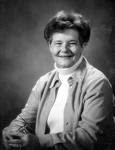


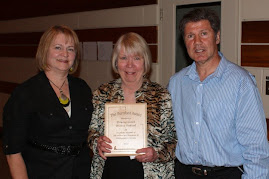
































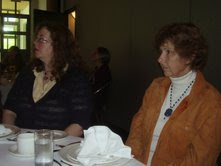



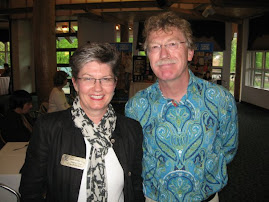


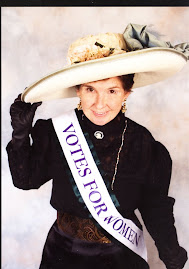












































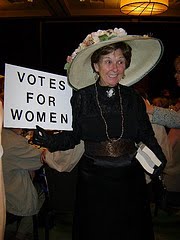


No comments:
Post a Comment